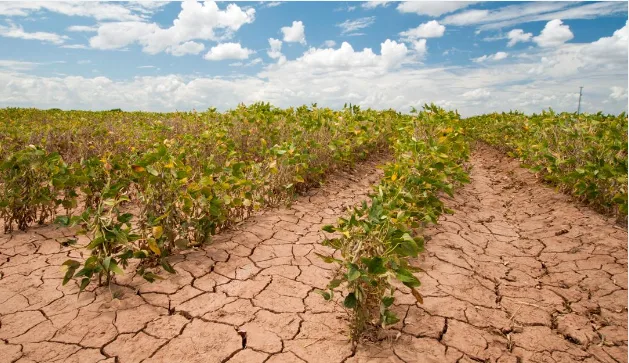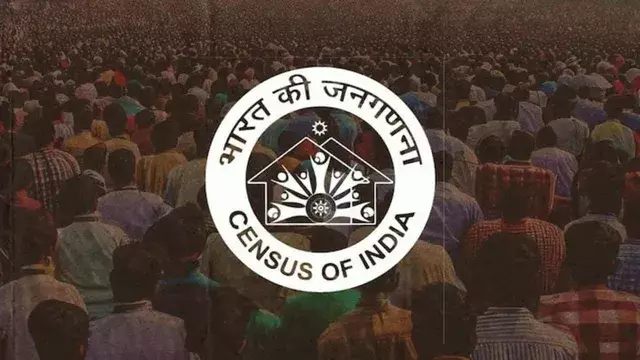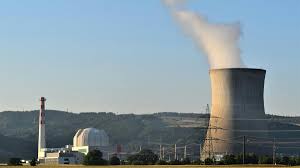- Courses
- GS Full Course 1 Year
- GS Full Course 2 Year
- GS Full Course 3 Year
- GS Full Course Till Selection
- Answer Alpha: Mains 2025 Mentorship
- MEP (Mains Enrichment Programme) Data, Facts
- Essay Target – 150+ Marks
- Online Program
- GS Recorded Course
- Polity
- Geography
- Economy
- Ancient, Medieval and Art & Culture AMAC
- Modern India, Post Independence & World History
- Environment
- Governance
- Science & Technology
- International Relations and Internal Security
- Disaster Management
- Ethics
- NCERT Current Affairs
- Indian Society and Social Issue
- NCERT- Science and Technology
- NCERT - Geography
- NCERT - Ancient History
- NCERT- World History
- NCERT Modern History
- CSAT
- 5 LAYERED ARJUNA Mentorship
- Public Administration Optional
- ABOUT US
- OUR TOPPERS
- TEST SERIES
- FREE STUDY MATERIAL
- VIDEOS
- CONTACT US
Government Efforts to Combat Climate Change in Agriculture
Government Efforts to Combat Climate Change in Agriculture
14-12-2024

- Agriculture is highly vulnerable to the impacts of climate change, which include erratic weather patterns, floods, droughts, heat waves, and more.
- Recognizing this, the Indian government, in collaboration with the Indian Council of Agricultural Research (ICAR), has launched several initiatives to enhance climate resilience in agriculture.
- These measures aim to help farmers cope with these challenges, improve productivity, and sustain livelihoods.
NICRA Project: Focus on Climate Resilient Agriculture
- The National Innovations in Climate Resilient Agriculture (NICRA) project, by ICAR, is designed to study the impacts of climate change on agriculture and develop strategies to mitigate these effects.
- NICRA focuses on a variety of sectors within agriculture, including crops, livestock, horticulture, and fisheries.
- It aims to promote climate-resilient technologies that help farmers adapt to extreme weather conditions, such as droughts, floods, frost, and heatwaves.
What is NICRA ?
|
Development of Climate-Resilient Crop Varieties:
- Over the past 10 years, ICAR has developed and released 2,593 crop varieties that are resistant to various biotic (e.g., pests) and abiotic (e.g., drought, salinity) stresses.
- Of these, 2,177 varieties have been found to tolerate one or more of these stresses, enhancing the capacity of crops to withstand climate extremes and improve food security.
Vulnerability Assessment of Agriculture to Climate Change:
- A key initiative is the district-level risk and vulnerability assessment of agriculture, conducted across 651 agricultural districts in India, following protocols established by the Intergovernmental Panel on Climate Change (IPCC).
- According to this assessment:
- 310 districts are identified as vulnerable to the effects of climate change.
- 109 districts are classified as "very high" vulnerable.
- 201 districts are "highly vulnerable" to climate change.
District Agricultural Contingency Plans (DACPs):
- To address the challenges faced by these vulnerable regions, the government has prepared District Agricultural Contingency Plans (DACPs).
- DACPs are tailored to each district and provide specific guidance on:
- Location-specific climate-resilient crops and varieties.
- Agricultural practices that can help farmers adapt to weather anomalies like floods, droughts, or heatwaves.
Climate Resilient Villages (CRVs):
- Under NICRA, the concept of "Climate Resilient Villages" (CRVs) has been introduced to build the resilience of farming communities.
- 448 Climate Resilient Villages have been set up in 151 vulnerable districts across 28 states and union territories.
- These villages serve as demonstration hubs for climate-resilient technologies where farmers can learn about new agricultural practices and adopt climate-smart techniques.
Capacity Building for Farmers:
- To ensure widespread adoption of climate-resilient technologies, the government focuses on capacity building programs.
- These programs aim to educate farmers about the impacts of climate change and provide them with the knowledge and tools to adopt more resilient agricultural practices.
Government Schemes Promoting Climate Resilience:
The Indian government has launched various schemes to support farmers and help them cope with the challenges posed by climate change. These include:
- Per Drop More Crop (PDMC) Scheme (Launched in 2015-16):
- Focuses on improving water use efficiency through micro-irrigation systems such as drip and sprinkler irrigation.
- This helps reduce water wastage and improves crop yields, particularly in water-scarce areas.
- Rainfed Area Development (RAD) Scheme (Launched in 2014-15):
- Focuses on promoting Integrated Farming Systems (IFS) to enhance productivity and minimize risks in rainfed areas that depend on unpredictable rainfall.
- Mission for Integrated Development of Horticulture (MIDH):
- Encourages the development of horticulture, promoting crops like fruits, vegetables, and flowers in a climate-resilient manner.
- Agroforestry and National Bamboo Mission:
- Promotes the integration of trees and bamboo with crops, improving environmental sustainability and income diversification for farmers.
- Pradhan Mantri Fasal Bima Yojana (PMFBY):
- A crop insurance scheme that provides financial support to farmers in the event of crop damage due to natural calamities, adverse weather incidents, or unforeseen events.
- Weather-Based Crop Insurance Scheme (RWBCIS):
- A weather-indexed insurance scheme that offers insurance based on weather parameters like rainfall and temperature.
Agrometeorological Advisory Services (AAS) by IMD
- To help farmers manage the risks posed by weather variations, the India Meteorological Department (IMD) runs the Gramin Krishi Mausam Sewa (GKMS) scheme.
- Under this scheme, medium-range weather forecasts (up to 5 days) are provided at district and block levels.
- Agromet Advisories are issued twice a week by 130 Agromet Field Units (AMFUs), which are located at agricultural universities, ICAR institutes, and IITs. These advisories offer:
- Weather-based recommendations for crops and livestock management.
- Strategies to minimize weather-related risks, reducing potential crop loss due to adverse weather conditions.
Conclusion: Building Resilience for the Future
India's government is taking a multi-pronged approach to tackle the challenges of climate change in agriculture. By developing climate-resilient crops, promoting sustainable agricultural practices, providing insurance support, and educating farmers on climate adaptation, India is strengthening its agricultural sector against the increasing risks posed by climate change.



